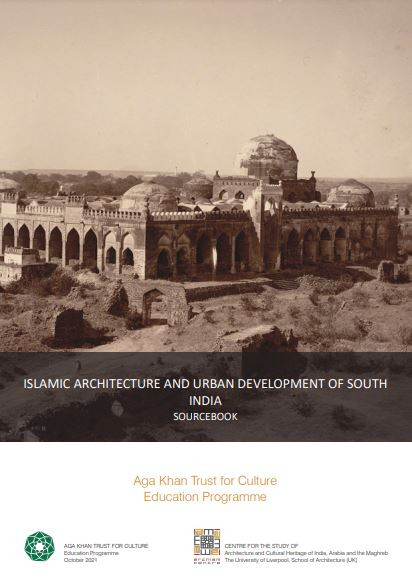
This sourcebook is a companion to the Architecture and Urban Development of the Deccan Sultanates lecture series prepared by ArCHIAM, on behalf of the Education Programme of the Aga Khan Trust for Culture. This series of lectures aims to present the architectural and urban contributions of the South Indian sultanates that remain relatively unknown, beyond a handful of well-publicized monuments. The Deccan Plateau, lying south of the central Indian mountain range, occupies a significant part of the triangle-shaped peninsular Indian landmass. Islamic cultural and architectural influence extended into the region from the late-thirteenth century CE onwards, which reached its apogee during the rule of the five Deccan Sultanates – Ahmadnagar, Bijapur, Berar, Bidar, and Golconda – during the late-fifteenth to the late-seventeenth centuries CE. In an attempt to bring this distinctive late-medieval Islamic period architecture into sharper focus, this series of lectures draw on both existing scholarship as well as new research undertaken in Bijapur.
ArCHIAM. Islamic Architecture and Urban Development of South India Sourcebook. University of Liverpool: 2021
I agree to the terms outlined below:
You agree to upload and assign Mosqpedia Database the rights to use the content worldwide and in perpetuity across all current and future media platforms. Mosqpedia Database may edit, copy, adapt and translate your contribution.
The content will be distributed under the Creative Commons Attribution-Deed – Attribution-NonCommercial-NoDerivatives 4.0 International – Creative Commons
All data will be stored in line with data protection regulations.